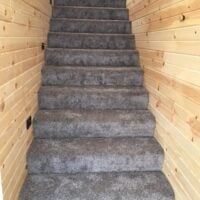Up Next: Exterior Finishes
I’ve been doing some research and pricing on a few different ideas.
I’ll be doing some stone as accents, but would like input for the bulk of the exterior coverings.
As stated before, I’m looking for low maintenance (aka no natural wood to upkeep)
Most exteriors will need a sheathing and vapor barrier over the studs before the covering is installed, such as vinyl siding, pole barn steel, steel siding, various cement boards, etc.
It looks like the vapor barrier and sheathing could be combined to save time if I used a product like Force Field 7/16″, which costs about $.90 SQ ft. Then from there it would range from $2.10 for cheaper vinyl, $2.40 for cheaper steel, $3.30 for hidden fastener steel, etc etc.
Then there’s LP panels. The 7/16 panels don’t require sheathing and can be installed directly onto the studs (with a vapor barrier first). They cost $2.25 SQ ft but need to be painted….
There’s also pre-painted cement board with a 30 year warranty for $2.5sqft (I could pick a finished color and save painting time), but would need sheathing/vapor behind it (add another $.90sqft if using something like Force Field)
What would you do?? Any other reasonably priced options?
I found a kick ass product made by Nichia that looks awesome, but it’s easily twice of what I’d like to spend lol
